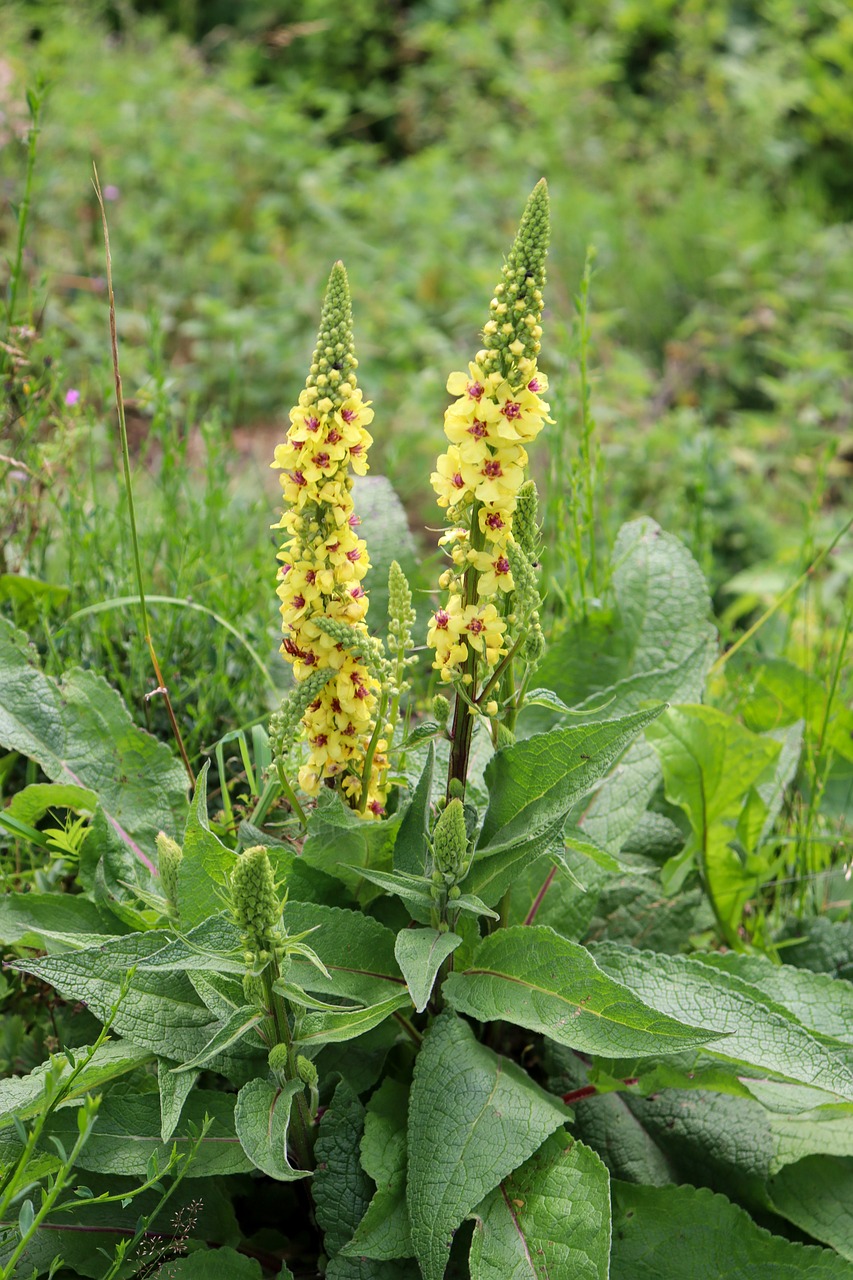When smoking mullein, it’s crucial to use properly dried leaves or flowers to ensure a smooth, even burn. Mullein can be smoked on its own or combined with other herbs like damiana, mugwort, or raspberry leaf for added benefits and flavor. To prepare mullein for smoking:
- Gather fresh mullein leaves and flowers, ensuring they are free from pesticides and contaminants.
- Hang the mullein to dry in a cool, dark place with good air circulation for several days until the leaves and flowers are crisp and crumbly.
- Crush the dried mullein into small pieces, removing any stems or thick veins.
- Pack the mullein loosely into a pipe, rolling paper, or herbal vaporizer.
- Light the mullein and inhale slowly, holding the smoke in your lungs for a few seconds before exhaling.
Start with small amounts and monitor your body’s response. Discontinue use if you experience any adverse reactions.1
Mullein Tea
Another popular method of using mullein is brewing a tea from the leaves or flowers. Mullein tea is known for its soothing properties and may help alleviate respiratory issues, sore throats, and coughs.2 To make mullein tea:
- Place 1-2 teaspoons of dried mullein leaves or flowers in a tea strainer or directly into a mug.
- Pour 8 ounces of boiling water over the mullein.
- Allow the tea to steep for 10-15 minutes, covering the mug to retain the beneficial oils.
- Strain the tea if necessary, and add honey or lemon to taste, if desired.
- Drink the tea up to 3 times daily for relief of respiratory symptoms or as a general tonic.
Mullein-Infused Oils and Salves
For topical use, mullein-infused oils and salves can be applied to the skin to soothe minor irritations, wounds, and hemorrhoids.3 To create a mullein-infused oil:
- Fill a glass jar halfway with dried mullein leaves and flowers.
- Pour a carrier oil, such as olive oil or coconut oil, over the mullein until the jar is full.
- Seal the jar tightly and place it in a sunny location for 2-4 weeks, shaking daily.
- Strain the oil through a cheesecloth or fine-mesh sieve, squeezing out as much oil as possible.
- Store the infused oil in a cool, dark place for up to 1 year.
To make a salve, mix the mullein-infused oil with melted beeswax and pour into small containers to solidify.
Mullein Tinctures and Extracts
Mullein tinctures and extracts offer a concentrated way to consume the herb’s beneficial compounds. To create a mullein tincture:
- Fill a glass jar halfway with dried mullein leaves and flowers.
- Pour 80-100 proof alcohol (such as vodka) over the mullein until the jar is full.
- Seal the jar tightly and store it in a cool, dark place for 4-6 weeks, shaking daily.
- Strain the tincture through a cheesecloth or fine-mesh sieve, squeezing out as much liquid as possible.
- Store the tincture in a dark glass bottle for up to 5 years.
A typical dosage for mullein tincture is 1-2 milliliters, taken 2-3 times daily. Consult with a qualified herbalist or healthcare provider to determine the appropriate dosage for your needs.4
When using mullein, it’s essential to source high-quality, organic herbs from reputable suppliers. This ensures that the mullein is free from contaminants and retains its potency. While mullein is generally considered safe, some people may experience side effects such as skin irritation or allergic reactions.5 Always perform a patch test before using mullein topically and discontinue use if any adverse reactions occur.
In conclusion, mullein is a versatile herb that can be used in various ways, including smoking, tea, infused oils, salves, and tinctures. By following proper preparation techniques and dosage guidelines, you can safely incorporate mullein into your herbal routine for its potential respiratory, skin, and overall health benefits. As with any herbal remedy, it’s crucial to consult with a healthcare professional before use, especially if you have pre-existing medical conditions or are taking medications.

